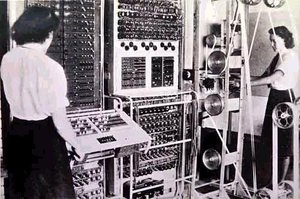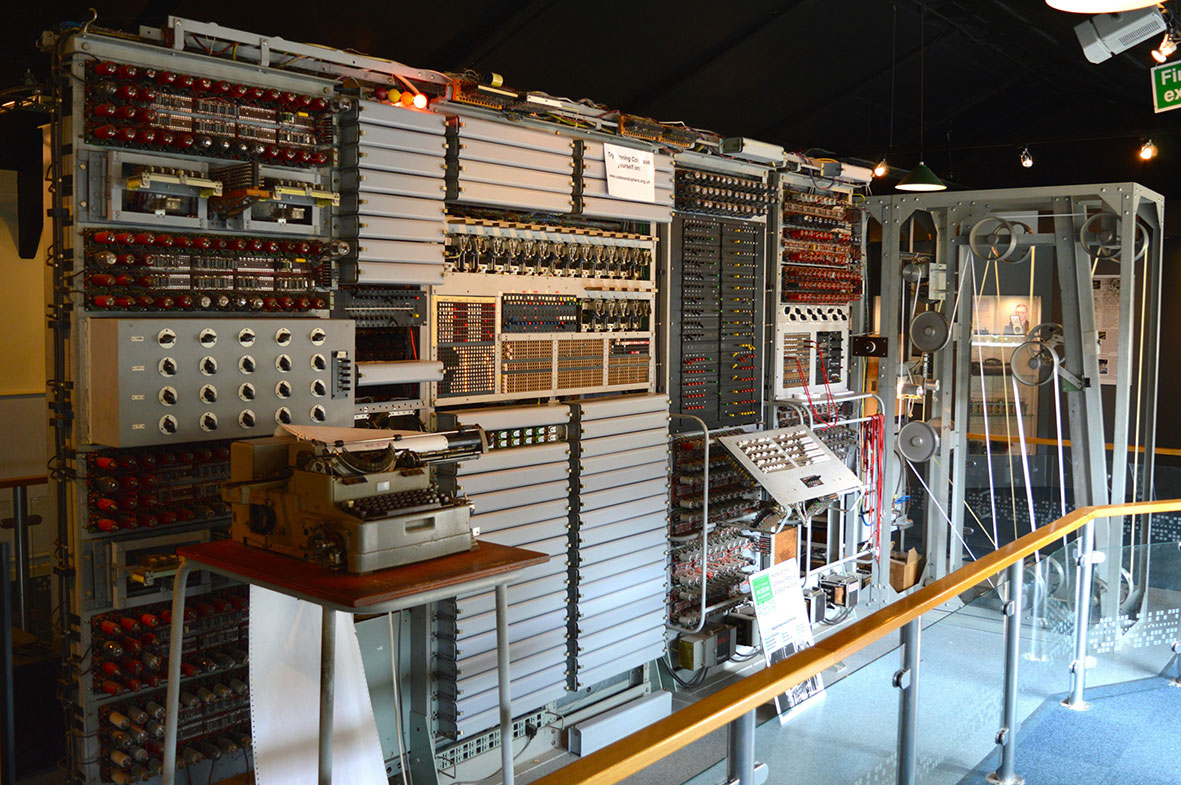

Colossus computer portable#
Unlike the more familiar portable Enigma, Lorenz wasn't used in the field. Lorenz, a teletype-connected system that relied on 12 ciphering wheels, was used to encipher high-level traffic between German high command and other headquarters. Regarded as one of the earliest electronic digital computers - if not the first - Colossus was used to break messages enciphered by the Germans' Lorenz machines. In another attempt at keeping the code-breaking secret, the Colossus original drawings were deliberately burned in 1960, more than a decade before the work of Bletchley Park was revealed.
Colossus computer code#
Ten versions of the Colossus were built but by 1960, in order to keep the machine’s existence secret, all had been dismantled and all drawings of the machine were burnt – so the machine didn’t have a direct impact on the development of future computers.Ĭaptain Jerry Roberts autobiography Lorenz: Breaking Hitler’s Top Secret code at Bletchley Park is available now.A reconstructed World War II-era British computer is trying to crack messages enciphered on Nazi hardware in an event sponsored by the National Museum of Computing, located at Bletchley Park, the wartime organization famous for breaking the German Enigma codes.ĭubbed the Colossus, the vacuum tube-based computer was built using all that remained - photographs and fragments of some circuit board schematics - after the original 10 machines were disassembled when the war ended. After the war, General Eisenhower said that the intelligence gleaned at Bletchley had shortened the fighting by at least two years.
/cdn.vox-cdn.com/assets/1000932/Screen_Shot_2012-03-12_at_4.38.26_PM.png)
The Lorenz decrypts provided information that changed the course of the war in Europe and saved lives at critical junctures like the D-Day landings. Tens of thousands of Tunny radio messages were intercepted by the British and broken at Bletchley Park by Roberts and his fellow codebreakers. In the video, Margaret Bullen shares her memories of helping to wire up the computer, alongside Colossus operator Irene Dixon’s reflections on the importance of their work. It wasn’t the day-to-day running of the German war machine, it would be plans to move army divisions about, that would take the Germans several weeks to organize,” said Pether.Īt the peak of Bletchley’s wartime activities were some 10,000 people working there, and up to two thirds of the staff were women, many of whom worked on the park’s Colossus machines. “That might be a long time to most people, but don’t forget messages flowing over this teleprinter service was strategic material. The room-sized computer was studded with valves that glowed red hot while it worked, reading characters from intercepted messages off reels of paper tape, at a rate of 5,000 per second.Ĭolossus reduced the average time it took to entirely decrypt a Lorenz message from many days, or even weeks, to about four days. “It was one of the first semi-programmable electronic computers,” said John Pether, of The National Museum of Computing. While Bletchley is famous as home to Alan Turing and his work on cracking the Nazi’s Enigma code–used to protect day-to-day communications within the German army, airforce and navy– it was Bletchley’s efforts in cracking Lorenz that led to the creation of one of the world’s first computers, the Colossus. In the video above, you can hear their recollections and why unpicking Lorenz was so vital to the Allied war efforts. The few surviving veterans of Bletchley’s WWII codebreaking process gathered in Bletchley Park recently to pay tribute to Captain Jerry Roberts, who played a key role in cracking the Lorenz cipher at Bletchley.
Colossus computer professional#
GPT-4 cheat sheet: What is GPT-4, and what is it capable of?ĬhatGPT is the fastest-growing area of interest for professional learners, Udemy reportsĭespite predicted growth, semiconductor industry requires transformation in 2023 SEE: Hacking the Nazis: The secret story of the women who broke Hitler’s codes (PDF download) (TechRepublic cover story) More about InnovationĬhatGPT cheat sheet: Complete guide for 2023 This was the breakthrough the Allied codebreakers at Bletchley Park in the UK needed, giving them vital clues to how the Lorenz cipher machine worked, and a way to ultimately crack the code. Hitler’s Lorenz cipher was so complex, anyone attempting to try to brute force it would have to check more permutations than there are electrons in the universe.īut in August 1941 a German military operator got careless, and sent an almost identical message twice without changing the wheel settings on the Lorenz enciphering machine.


At the height of Nazi power during the Second World War, Hitler’s communications with his High Command were protected by a code thought to be uncrackable.


 0 kommentar(er)
0 kommentar(er)
